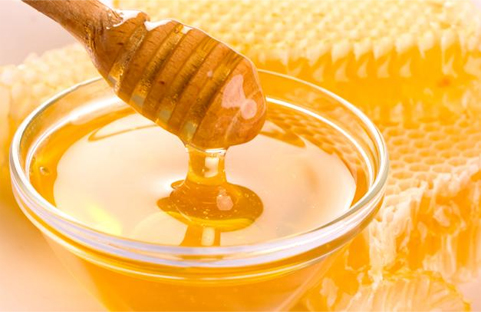تطور تقارب من الهيئات الاثمار منخفضة للغاية في بيزيزوميكوتينا يقترح التكيفات الرئيسية لموئل النحلConvergent evolution of highly reduced fruiting bodies in Pezizomycotina suggests key adaptations to the bee habitat
تطور تقارب من الهيئات الاثمار منخفضة للغاية في بيزيزوميكوتينا يقترح التكيفات الرئيسية لموئل النحل
Convergent evolution of highly reduced
fruiting bodies in Pezizomycotina suggests
key adaptations to the bee habitat
Anja Amtoft Wynns
ملخص
الخلفية: من بين الفطريات التي لم يتم الكشف عنها في الطبيعة هي تلك التي تعيش في ارتباط وثيق مع الاجتماعية والنحل الانفرادي. نخبة النحل المتخصصة بيتسيا، أسكوسفيرا وريماسكوس لافته للنظر ليس فقط للمتخصصين ولكن أيضا لأجسامهم الاثمار بسيطة أو أسكوكاربس، التي هي شاذة شكليا في بيزيزوميكوتينا.
يتميز بيتسيا و أسكوسفيرا من قبل كيسستوثيسيوم وحيدة الخلية مثل الكيس المعروف باسم بوغ الكيس، في حين يتميز إريماسكوس عسي تماما، أو أسي لا تشكل داخل أسكوكارب واقية. قبل
الجزيئية فيلوجينيتيكش وضع هذه الأجناس داخل بيزيزوميكوتينا ظلت مؤقتة. شكلية كانت الأحرف مضللة لأنها لا تنتج أسكوكاربس متعدد الخلايا، وهو شخصية محددة من يزيزوميكوتينا.
بسبب أجسادهم الاثمار فريدة من نوعها، والعلاقة الوثيقة بين هذه النحل الفطريات المتخصصة و مونوفيلي بهم ظهرت المؤكد. ومع ذلك، أظهرت الدراسات الجزيئية الأخيرة أن بيتسيا لا ترتبط ارتباطا وثيقا أسكوسفايرا.
في هذه الدراسة، تم عزل فطر نادر جدا إرماسكوس (أسكوميكوتا، بيزيزوميكوتينا) من خبز النحل نحل العسل. هذه العزلات تمثل التقرير الثاني لل E. الإخصاب في الطبيعة وفي خلية النحل العسل. لإنشاء موقف منهجي من E. السماد و بيتسيا ألفي، أجريت تحليلات النشوء من النووية الريبوسومية لسو + سسو الحمض النووي تسلسل من هذه الأنواع و 63 أكوميسيتس إضافية.
النتائج: كشفت التحاليل التطورية أن إريماسكوس ليس أحادي الطيف. يرتبط إريماسكوس ألبوس ارتباطا وثيقا أسكوسفيرا في وروتيوميستس بينما E. الإخصاب ينتمي إلى ميكسوتريتشاسي، وهو عضو المفترضة من ليوتيوميستس. بيتسيا هو لا ترتبط ارتباطا وثيقا أسكوسفيرا ومثل E. E. السماد ينتمي على ما يبدو في ليوتيوميستس. وتشير هذه النتائج إلى أن كليهما تطورت عارية الزك و بوغ الكيس مرتين في بيزيزوميكوتينا و في الأنساب ذات الصلة بعيدة. جنس جديد وصفت سكوا لاستيعاب E. السماد.
الاستنتاجات: تبين أن الزورق العاري و كيس الجراثيم قد تطورا بشكل متقارب داخل موطن النحل. فإن التطور المتقارب لهذه الاسكوكارب غير العادية يفترض أن يكون قابلا للتكيف مع تشتت النحل. توضيح استراتيجيات التشتت من هذه الترابطات الفطرية تساهم في فهمنا لتفاعلها مع النحل ويوفر نظرة ثاقبة العوامل التي يحتمل أن تدفع تطور أسكوكاربس انخفاض في بيزيزوميكوتينا.
Abstract
Background: Among the understudied fungi found in nature are those living in cloConvergent evolution of highly reduced fruiting bodies in Pezizomycotina suggests key adaptations to the bee habitatse association with social and
solitary bees. The bee-specialist genera Bettsia, Ascosphaera and Eremascus are remarkable not only for their specialized
niche but also for their simple fruiting bodies or ascocarps, which are morphologically anomalous in Pezizomycotina.
Bettsia and Ascosphaera are characterized by a unicellular cyst-like cleistothecium known as a spore cyst, while
Eremascus is characterized by completely naked asci, or asci not formed within a protective ascocarp. Before
molecular phylogenetics the placement of these genera within Pezizomycotina remained tentative; morphological
characters were misleading because they do not produce multicellular ascocarps, a defining character of Pezizomycotina.
Because of their unique fruiting bodies, the close relationship of these bee-specialist fungi and their monophyly appeared
certain. However, recent molecular studies have shown that Bettsia is not closely related to Ascosphaera.
In this study, I isolated the very rare fungus Eremascus fertilis (Ascomycota, Pezizomycotina) from the bee bread of honey
bees. These isolates represent the second report of E. fertilis both in nature and in the honey bee hive. To establish the
systematic position of E. fertilis and Bettsia alvei, I performed phylogenetic analyses of nuclear ribosomal LSU + SSU DNA
sequences from these species and 63 additional ascomycetes.
Results: The phylogenetic analyses revealed that Eremascus is not monophyletic. Eremascus albus is closely related to
Ascosphaera in Eurotiomycetes while E. fertilis belongs in Myxotrichaceae, a putative member of Leotiomycetes. Bettsia is
not closely related to Ascosphaera and like E. fertilis apparently belongs in Leotiomycetes. These results indicate that both
the naked ascus and spore cyst evolved twice in the Pezizomycotina and in distantly related lineages. The new genus
Skoua is described to accommodate E. fertilis.
Conclusions: The naked ascus and spore cyst are both shown to have evolved convergently within the bee habitat. The
convergent evolution of these unusual ascocarps is hypothesized to be adaptive for bee-mediated dispersal. Elucidating
the dispersal strategies of these fungal symbionts contributes to our understanding of their interaction with bees and
provides insight into the factors which potentially drive the evolution of reduced ascocarps in Pezizomycotina.
Keywords: Ascosphaerales, Eremascaceae, Honey bees, Solitary bees, Yeasts, Skoua




